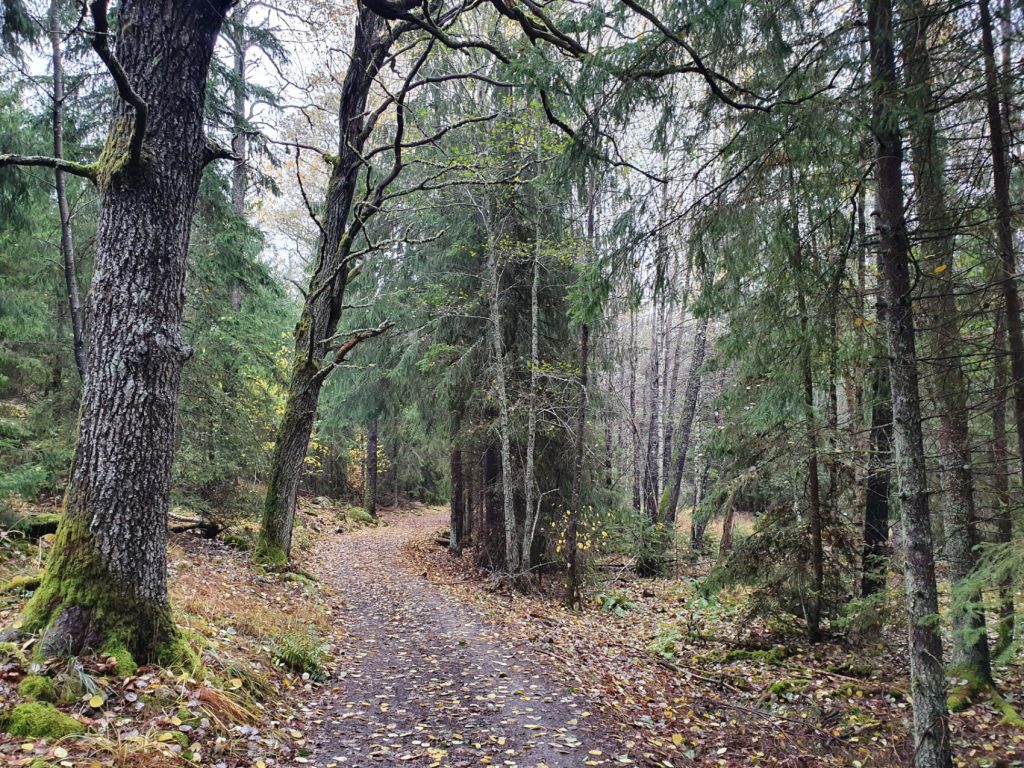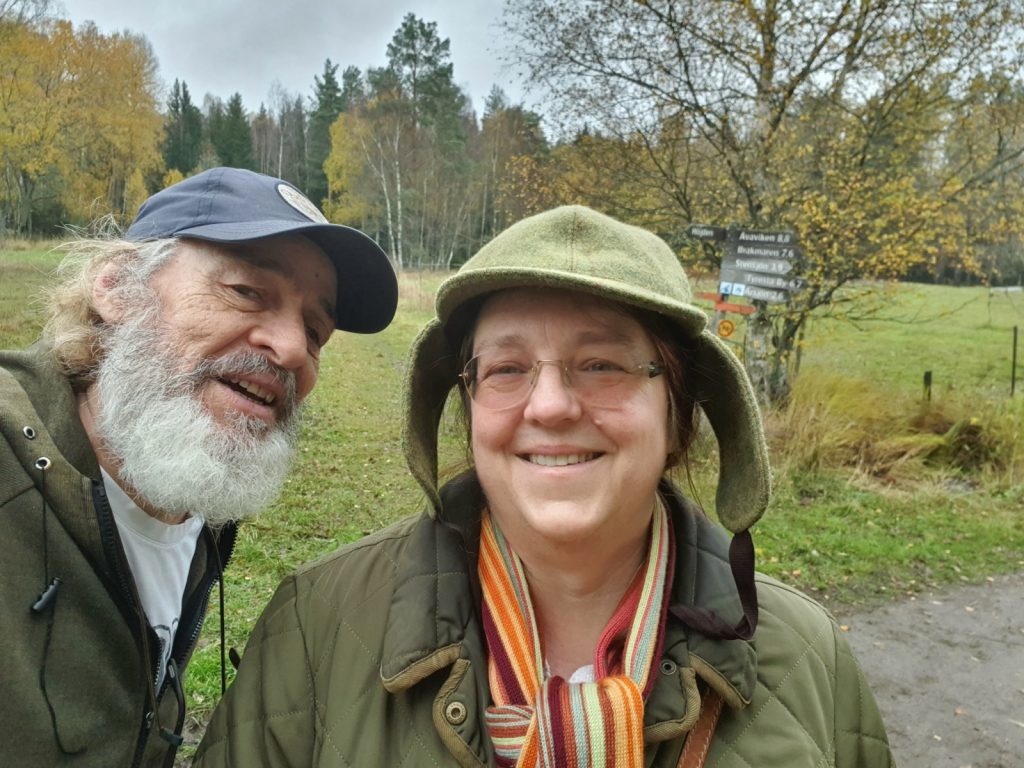I went shopping this morning. I did it at our local ICA. Among my shopping was a container of blueberries and some mushrooms. It seems I’m not like the natives.
The Swedish people are known for their ‘outdoorsyness’. They love nothing more than heading for the woods with wicker baskets and picking their own berries and mushrooms. Mind you, that’s about all you can pick in the woods. The list of things you can’t pick (or do) in the national park near us is very long.
Still, the park itself is wonderful. All three of us went a little way in today.

There were a lot of other people doing the same thing. Mind you, Tyresta National Park is massive so it’s not like we saw that many people. And it was a Sunday. And berry picking time.
Not that we saw any blueberries. Perhaps they’d already been picked clean. If so then I feel a bit sorry for the couple we saw heading out as we were returning, empty basket hopefully swinging on an arm.
The woods were excellent, though we didn’t see any moose and the dogs weren’t allowed off lead. The woods are chiefly full of moss, lichen and trees which are covered in moss and lichen. As are the rocks. In fact, if you stand still for too long, the moss and lichen will more than likely start from your feet and advance northwards.
Maybe that’s why we didn’t see any moose. They are there but are covered in moss and lichen.
After a most enjoyable walk in the woods we then went for a drive in search of another type of woods. Mirinda wanted to know where the Castle Towers equivalent was. And we found it.
The trick is to follow the signs that say ‘Centrum’. It’s the same as following the Centre-ville signs in France. Or the Town Centre signs in the UK. Or the Hell on Earth signs in Castle Hill.
Obviously, in Sweden, there are shopping malls. It gets pretty bloody cold in the winter so having the shops under one roof makes a lot of sense. And Tyresö is our closest.

And Mirinda, in true style, went in empty-handed and returned carrying a big bag full of goodies. She claimed it was very satisfying. I was going to write that we have different definitions of the word ‘satisfying’, but, I have to admit that I found the grocery shopping this morning very satisfying.
Particularly satisfying was the purchase of a big piece of salmon which roasted particularly well for dinner with leftovers for lunch tomorrow.
All in all, a very satisfying day.

Today, this happened
On 25 October, 1616, Dirk Hartog discovered Australia. He was not the first European to discover Australia though. That honour goes to a chap called Willem Janszoon in 1606.
Both men were working for the Dutch East Indies Company when they happened upon Australia. Dirk was lost and accidentally bumped into Western Oz but Willem had decided to sail south from New Guinea to see what he could find. He found Cape York in Queensland and charted a bit of the coastline.
He also landed but the natives were not keen on him or his men. He also thought the land was too swampy. Having drawn a bit of a map, he headed back north. He called the bit of land he’d mapped Nieu Zeland but the name didn’t catch on.
Dirk, on the other hand, managed to get lost and stumbled onto the Western Australian coast. He left behind a plate nailed to a post. He scratched the following inscription onto the pewter plate:
“1616 On 25 October arrived the ship Eendracht, of Amsterdam: Supercargo Gilles Miebais of Liege, skipper Dirch Hatichs of Amsterdam. on 27 d[itt]o. she set sail again for Bantam. Deputy supercargo Jan Stins, upper steersman Pieter Doores of Bil. In the year 1616.“
The plate didn’t stay there, though. It is now in the Rijksmuseum in Amsterdam. It was replaced with a copy in 1697 and the original brought home. Maybe there was a security deposit on it. Maybe there was an embarrassing typo. I don’t know.
Of course, the Dutch didn’t establish a prison on either Australian coast so, according to most non-native Australians, Captain James Cook discovered it in 1770. According to most native Australians it was spewed up by the rainbow snake. According to most scientists, the natives arrived around 50,000 years ago. Before then, there were just very odd animals wandering about.


